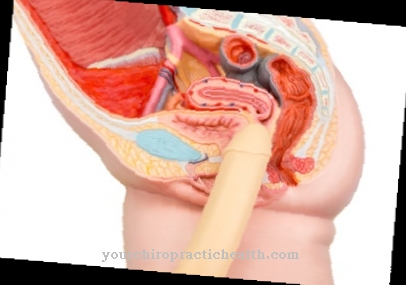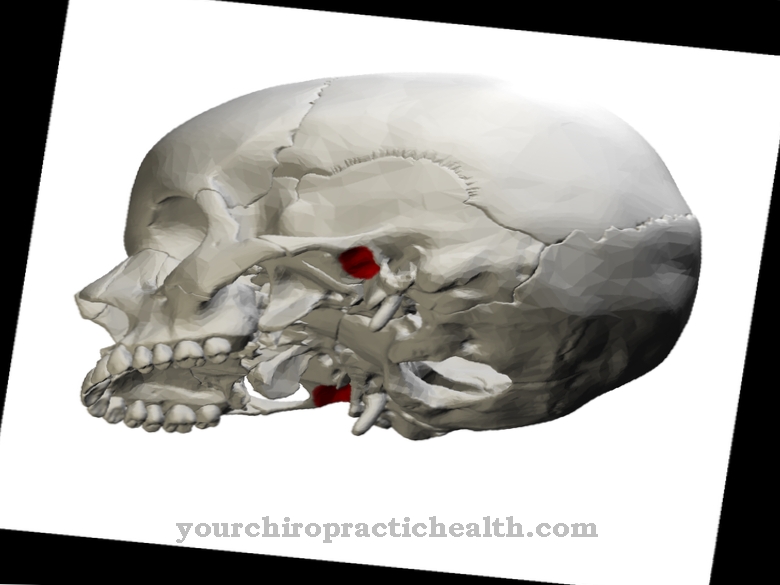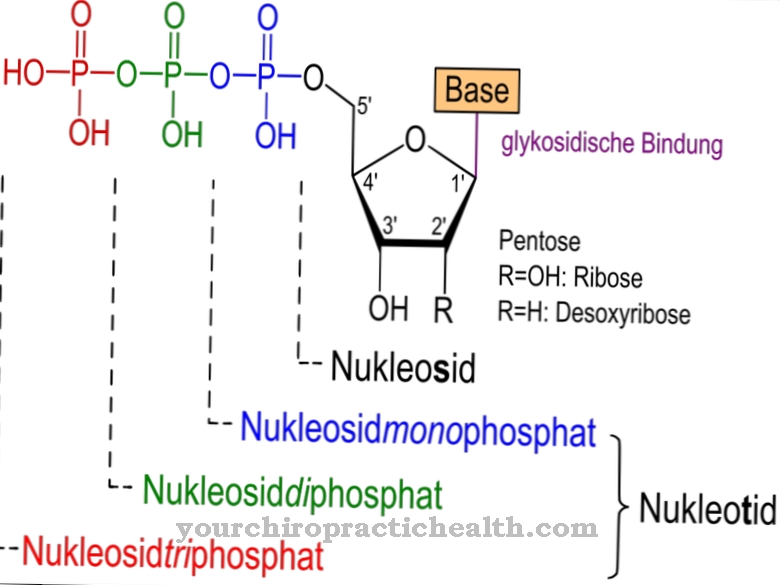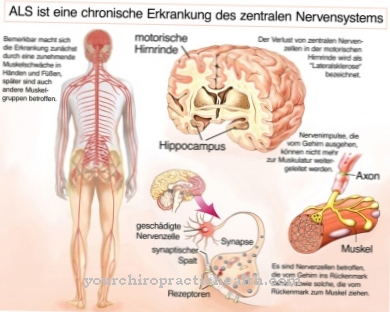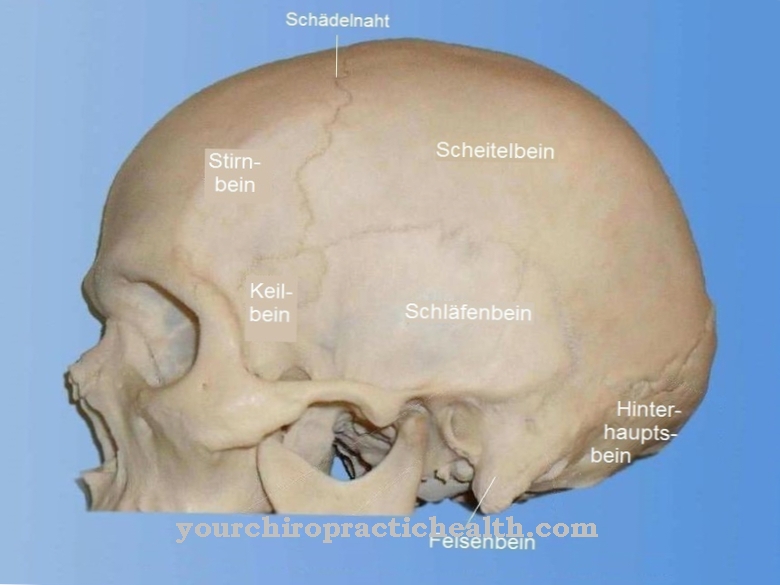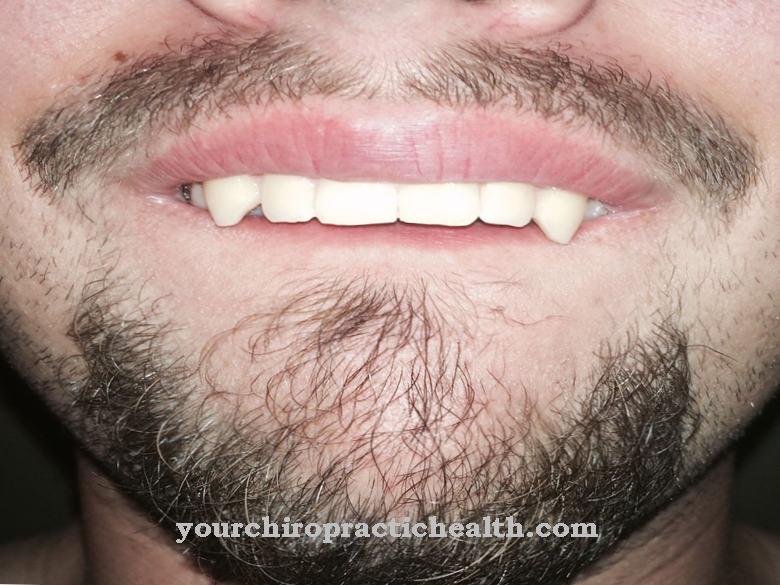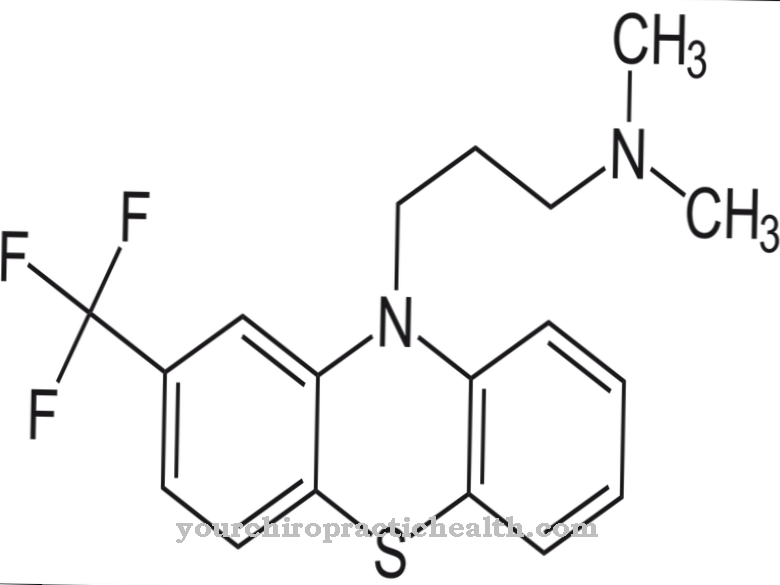Sedentary lifestyle, excessive strain or inflammation in the shoulder area chronic shoulder pain trigger. If the person concerned does nothing about it, the underlying causes can lead to irreversible wear and tear. However, treatment in collaboration with orthopedists and physiotherapists alleviates the symptoms and often leads to a cure for chronic shoulder pain.
What is Chronic Shoulder Pain?

Chronic shoulder pain is shoulder pain that develops over a long period of time or lasts longer than four weeks.
Shoulder pain is caused by a malfunction or overload of joints, muscles, and tendons. It is not the bones of the shoulder that are affected, but the surrounding soft tissues. The affected person is restricted in his movements, so that he can no longer perform everyday actions. Because he can only move his shoulder to a limited extent, there are restrictions in both private and professional life.
causes
Due to its large range of motion, the shoulder joint is prone to wear and tear and injuries. The range of motion gives the shoulder its enormous mobility, but also makes it unstable. Surrounding soft tissues stabilize the shoulder. Therefore, a functional weakness in the area of these soft tissues is a common cause of chronic shoulder pain. In general, inflammation of the soft tissues that stabilize the shoulder leads to chronic shoulder pain. Inflammation can affect the tendons, bursae, or the shoulder joint.
In the so-called bottleneck syndrome (impingement syndrome), pain occurs with certain movements. The cause is soft tissue that bumps into the roof of the shoulder or is trapped under it.
Overloading can cause tendon attachments or the shoulder joint to become inflamed. An inflamed shoulder joint sometimes develops into a chronic shoulder joint inflammation, the so-called frozen shoulder. In addition to excessive stress, the bottleneck syndrome, lack of exercise and / or capsule infections lead to this frozen shoulder.
Overloading also promotes joint wear, which can lead to osteoarthritis. This triggers chronic shoulder pain. Congenital deviations in the shoulder joint sometimes trigger a habitual dislocation. This means that the head of the humerus repeatedly comes out of the shoulder socket, which leads to chronic pain.
Again and again, hardened muscles and tension lead to chronic shoulder pain. Stress, lack of exercise, one-sided strain and / or an unfavorable body posture promote the occurrence of tension.
You can find your medication here
➔ Medicines for painDiseases with this symptom
- Bursitis
- Shoulder joint dislocation
- dislocation
- Tendon pain
- Shoulder arm syndrome
- Rotator cuff rupture
- Shoulder joint inflammation
- Impingement syndrome
- arthrosis
Diganosis & course
Home remedies ↵ for shoulder
pain
Chronic shoulder pain requires a detailed medical history from an orthopedic surgeon. He will ask the person concerned about shoulder injuries. He will also inquire about the duration and exact nature of the pain and find out which [[restricted mobility [[s the person concerned is suffering from.
Statements about work-related or sport-related risk factors give the doctor information about the cause of the pain. The patient's medical history is followed by a physical examination. An orthopedic surgeon can use a variety of tests to pinpoint the cause of chronic shoulder pain.
In general, chronic shoulder pain can be cured better if treated early. If a shoulder joint is permanently overloaded, this leads to irreversible wear. Already worn joints cause pain, which therapy cannot eliminate, but can alleviate. Pain that causes tense muscles result in a milder form of the discomfort. Treatment can lead to complete healing.
Complications
Chronic shoulder pain often leads to some complications due to its persistent occurrence. First of all, there is a risk of irreparable wear and tear of the joints due to the constant overload, which, depending on the duration and intensity of the symptoms, can spread to neighboring areas of the body such as the humerus. This can greatly reduce the mobility of the arms. The pain itself also brings complications.
The symptoms often spread to the arms, neck and chest area, where they lead to tension and cramps. If the chronic shoulder pain is the result of an illness or injury, further complications can arise. Damage to the rotator cuff, for example, shifts from the shoulder blade to the head of the humerus and makes normal turning movements with the head impossible. Shoulder pain as a result of a delayed bursitis is a serious sign, as further infections and serious diseases such as rheumatoid arthritis can develop without treatment.
Chronic shoulder pain can also have less severe consequences and only lead to temporary stiffening of muscles and joints. As a result of chronic pain in the shoulder, the so-called “frozen shoulder” often occurs, a disease in which the joint capsule becomes stuck together due to inflammation, which in turn stiffens the shoulder. In extreme cases, this leads to paralysis of the shoulder and nocturnal pain in the neighboring body regions.
When should you go to the doctor?
Chronic shoulder pain is often the result of tension. As harmless complaints, they can be treated well with home remedies. Rest and warmth are suitable therapy. Chronic shoulder pain due to wear and tear, which has resulted in osteoarthritis, make a visit to the orthopedic surgeon necessary. They can find out the exact cause after an X-ray or MRI examination. Soft tissues can also be shown well with sonography.
Shoulder pain often occurs after an accident. A fall on the outstretched arm can cause ligament stretching, torn ligament, or bony injury. A spontaneous, injury-related pain should always be the reason to see a doctor. If acute pain has been ignored, chronic complaints develop, to which sufferers get used over time. The chronic shoulder pain is only perceived diffusely and is therefore often played down. But if the shoulder becomes unstable and the arm can hardly be moved, the person concerned must do something about it.
A distinction is made between shoulder pain radiating from the neck and shoulder pain that begins deep in the armpit. Muscle weakness and numbness always indicate neurological failures and must be treated. There are many therapy options for shoulder complaints, depending on the severity of the underlying disease. They range from homeopathic mud packs to infrared radiation to cortisone injections and operations.
Doctors & therapists in your area
Treatment & Therapy
Depending on the cause of the chronic shoulder pain, treatment in cooperation with a change in the person's lifestyle can be successful. If the soft tissues around the shoulder joint are inflamed, an orthopedic surgeon will prescribe pain relievers and anti-inflammatory drugs. Targeted physiotherapy to strengthen the muscles, chiropractic and acupuncture support the effectiveness of the medication.
In the case of injuries and fractures around the shoulder joint, immobilizing the shoulder helps heal. The protection of the shoulder may be supplemented by physiotherapy.
A doctor usually treats chronic shoulder joint inflammation that leads to a frozen shoulder with physiotherapy. So the stiff shoulder gains mobility. The orthopedic surgeon often supplements physiotherapy with painkillers and medication that relax the hardened muscles.
In severe cases, if the shoulder joints are worn, only the surgical insertion of an artificial shoulder joint will help. Chiropractic and targeted muscle training help to reduce tension and muscle hardening. Thermal cures, such as hot baths, saunas or heat compresses, help ease chronic pain.
In addition, the doctor advises those affected to incorporate exercise into everyday life and to observe certain rules. A person with chronic shoulder pain should carry loads close to their body and maintain a straight back. You should avoid overhead work, do not exercise shoulder-straining sports and strengthen the shoulder muscles.
Outlook & forecast
Chronic shoulder pain that occurs as a result of insufficient physical exercise can, in most cases, be completely recovered. Regular physiotherapy or sports that have a positive effect on the muscles are helpful and can gradually relieve the pain. These sports activities include gentle stretching or swimming.
A one-sided body stress caused by long periods of sitting at a desk or PC can also be successfully treated in this way. In addition, measures such as a healthy posture, the optimal seat height and continuous changes in posture are important for a complete healing process.
For chronic shoulder pain, medication can be given to relieve the pain and loosen up the muscles. Without an additional physical change, however, the symptoms return when the drug is discontinued.
If the shoulder pain is caused by diseases of the skeletal system or muscle fibers, surgery can lead to a good chance of recovery. However, this depends on the severity of the disease.
If there are psychosomatic illnesses, the shoulder pain usually only heals after psychotherapeutic treatment. Finding the cause is often tedious. In addition, mental illnesses often cannot be completely cured. Relief is achieved through behavior changes and reassessments of past fates.
You can find your medication here
➔ Medicines for painprevention
Chronic shoulder pain can be prevented through shoulder exercises, exercise, and good posture. For activities that are carried out in a sitting position, it is advisable to take frequent breaks and to ensure a back-friendly workplace. Relaxation exercises for the shoulder and neck area as well as short walks help during the breaks.
Sports such as swimming and aqua aerobics bring appropriate exercise. Regular massages prevent tension and muscle hardening.
You can do that yourself
In the case of chronic shoulder pain, various measures can help to alleviate the symptoms. One-sided postures and movements should be avoided, as well as cold and drafts. Loads should not be borne on one side. Carrying heavy objects should be avoided if possible.
When exercising, stretching exercises should be done before and after. Inactive people should exercise more to relieve shoulder pain. People with chronic shoulder pain who resume physical activity after a long period of time should first rebuild their muscles. Special exercises for the shoulder, such as those shown by a physiotherapist, are also useful.
Affected people should pay attention to an ergonomic working posture at work. The work chair should be height-adjustable, have armrests, a neck support and a flexible backrest. The computer should be operated with your arms flat. The head should be kept in a central position, i.e. it should not be bent, hyperextended, or turned to one side. This prevents painful tension in the shoulder and neck area.The shoulders should not be overloaded by bad posture. Relaxation gymnastics during the break is useful.
People with chronic shoulder pain should not smoke and drink little alcohol. A healthy diet protects the joints and the metabolism. Cold or heat applications such as ice packs or heat compresses can relieve shoulder pain. They are available at the pharmacy.


.jpg)





